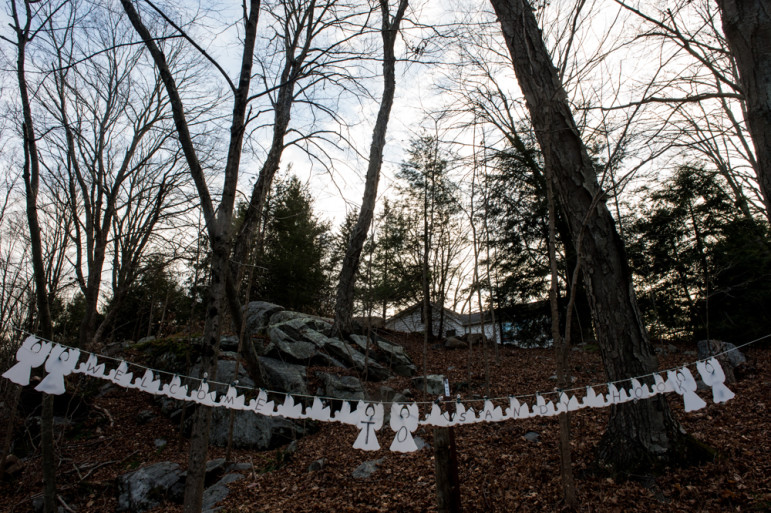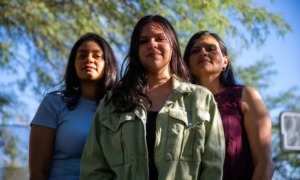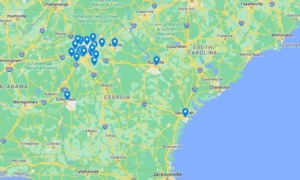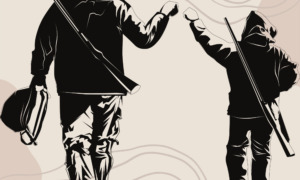NEW YORK — On a cold, rainy early spring night in 2014, I attended the private meeting of a tragic club nobody wants to join. It was a gathering of parents whose children had been killed as the result of gun violence. They were meeting in a Harlem hair salon under renovation to discuss strategy and allowed me to attend if I kept their names out of the news.
In some cases, the gun that killed their children was fired by a cop, in others by kids. In some cases the guns were fired by adults shooting at each other who hit an innocent bystander by mistake. The circumstances varied, but consequences were the same: All of the parents had to bury a child felled by a bullet.
 They had gathered to share ideas about how they could convert their pain into public policy. Before the violent killings turned their lives upside down, many had been apolitical, too busy with the demands of work and family to wade into politics. But now, with their sons or daughters buried, they wanted to take that anguish and turn it into something useful, to prevent another parent from joining the club.
They had gathered to share ideas about how they could convert their pain into public policy. Before the violent killings turned their lives upside down, many had been apolitical, too busy with the demands of work and family to wade into politics. But now, with their sons or daughters buried, they wanted to take that anguish and turn it into something useful, to prevent another parent from joining the club.
As the meeting went deep into the night, the conversation turned toward creating some kind of partnership with the families from Sandy Hook. At the mention of the mass shooting at Sandy Hook Elementary in Newtown, Connecticut, an audible grumble spread throughout the room.
One woman spoke up in a West Indian accent.
“Sandy Hook,” she said, shaking her head and making a clicking noise. “All we hear about is Sandy Hook, my Lord. It was sad what happened to those children. It truly was. But what about our pain?”
[Related: Parents Turn Pain into Policy]
It was clear she had struck a nerve. The rest of the room sounded like a church during a particularly fiery sermon. They interjected with shouts of “That’s right!” and vigorous head nods, encouraging her to continue in a call-and-response.
“Where was the president when our children were killed? Where was all the attention? Where was the press? Where was the outpouring of grief? All the soul-searching? We grieved, too. We’re all still grieving. But all we have is each other.”
According to the census, Newtown is 97 percent white, and the median income for a family of four is $100,000. Not one parent in that hair salon was white. Not one parent in the room had much in the way of money. They did not live in spacious houses like the ones that dot the rolling hills of Newtown.
They were not diminishing the pain of the Sandy Hook parents; they were just embittered because they suspected that the color of their children’s skin was wrapped up in the country’s indifference to their suffering.
On average, seven children and teens are killed by a gun every day in the United States. That means in the past four years — since the grotesque spasm of violence that erupted in Newtown when Adam Lanza, 20, slaughtered first graders in his former school — there have been the equivalent of 486 Sandy Hook massacres in this country. Many of the victims may not be as rich, they may not have been slain all in one place, many of them may have been darker, but all of them are just as dead.
‘We have to come together’
In the wake of the shooting at Sandy Hook, 91 percent of people in a Quinnipiac poll said they support closing what is popularly known as the gun-show loophole. It allows people who are not licensed gun dealers to sell guns without a background check of their customers. Instead, backed by the NRA, the U.S. Senate voted down comprehensive gun-reform laws in the wake of the murder of 20 children.
That Washington Beltway paradox inspired filmmaker John Richie to spend three years making “91%: A Film About Guns In America.” While filming, Richie traveled across the country, including to Newtown. He spoke to Sandy Hook parents off-camera and said how impressed he was at how those families formed organizations like Sandy Hook Promise, whose members take a bus to Capitol Hill every year to lobby Congress to make changes to reduce the likelihood that another Sandy Hook massacre will happen again.
“If there’s a good reason to remember a tragedy like what happened in Sandy Hook it’s that it reminds us why we need to be more active and committed to doing our civic duty like these families are to ensure we have stronger gun policies that make us all safe,” Richie said.
One of the awful ironies of the massacre at Sandy Hook is that so many of the people made their lives in this idyllic New England village because it seemed so safe. Its family-owned shops, manicured main street and babbling river seemed immune from the chaotic violence that struck it four years ago. It is about 80 miles away from New York City, but the small town feels several worlds away from the likes of Brownsville, Brooklyn, or the housing projects in Harlem. But a dead child has a way of collapsing distance and difference.
“It’s a sad thing to commemorate [the anniversary of the massacre at Sandy Hook Elementary], but if we’re going to find the good in it, it is to realize that we have to come together,” Richie said. “We don’t have a champion to try to push gun reform forward, so it really does fall on us — the people. And I hope the people realize that.”
Toward the end of the 2014 meeting in the Harlem hair salon, Taylonn Murphy, one of the organizers, whose daughter, Tayshana Murphy, was shot to death in the hallway of her apartment building, looked around at the swirl of activity and discussion. These parents had survived the unimaginable, and now they were willing to get to work and do whatever they could to make sure it wouldn’t happen again.
He wondered aloud what they could accomplish.
“If a person can deal with the type of tragic events and stress,” he said. “If someone can deal with all that pressure and all that strain, the passion has to be pushing them to do something extraordinary.”
Daryl Khan is the New York bureau chief for the Juvenile Justice Information Exchange and Youth Today, and an adjunct professor at the City University of New York Graduate School of Journalism.
































